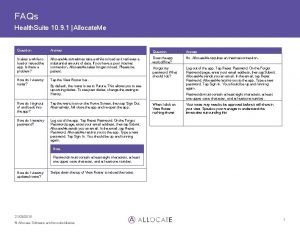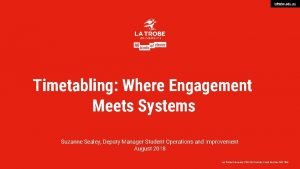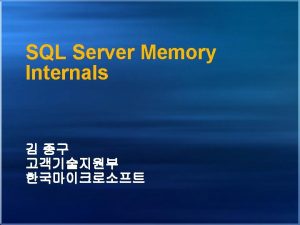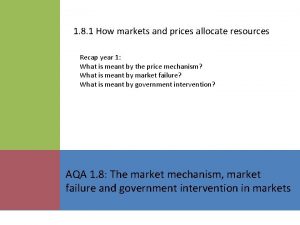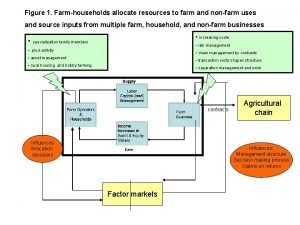Using Prices to Allocate Resources at Access Points









- Slides: 9

Using Prices to Allocate Resources at Access Points n Access Jimmy Shih, Randy Katz, Anthony Joseph Network One Point A Resources Administrative Domain Access User A Point B User B

Problem Statement n n We can solve congestion at access points by adding capacity, performing admission control, balancing loads between the access points, allowing advance reservation or constraining usage. We plan to explore: n How effective prices can affect users’ behaviors when used for admission control and load balancing at the access points. n How to design resource allocation schemes to minimize the adverse effects of pricing. E. g instability, overhead.

State of the Art on Congestion Pricing n Prior theoretical & simulation work suggest that congestion pricing can n Allocate resources to those who value them the most. Provide users with incentives to adjust their behaviors instead of constraining them. However, congestion pricing can also n n Cause users to experience unpredictable cost and performance. Require system overhead like accounting.

Key Concepts n n Perform congestion pricing at the application layer => Only need to provide users with a web interface containing the current prices. Perform congestion pricing at the access points => Only need to modify the access points. Use congestion pricing for admission control when users are willing to wait for resources or adjust their usage while using them. Use congestion pricing for load balancing when some access points are clearly better than others.

Using Prices to Allocate Resources at a H. 323 Gateway n Use prices for admission control and load balancing on connection oriented streams. n n Use prices to allocate the bottleneck resource, the number of phone lines at the gateway. Use prices to encourage users to use their computers instead of telephones to minimize using the bottleneck resource. Internet H. 323 PSTN Gateway Possible User Web Interface Current Price for Using Your Computer: 10 Tokens/min Next Minute Price for Using Your Computer: 20 Tokens/min Current Price for Using Your Telephone: 15 Tokens/min Next Minute Price for Using Your Telephone: 35 Tokens/min Packet Loss Rate When Using Your Computer: 3% Handoff the Current Call to Your Telephone: (510) 642 -8919 Yes? Handoff the Current Call to Your Computer: center. cs. berkeley. edu Yes?

Using Prices to Allocate Bandwidth at an Access Router n Use prices for admission control on connectionless resources. n n Use prices to decide whose incoming and outgoing packets to drop during congestion. Inform users the amount of bandwidth they are using and allow them to reserve the amount they need. Possible User Web Interface Current Price Per Mbyte Per Sec: 10 Tokens Left for Today: 200 Tokens Current Usage: 4 Mbyte Per Sec How Much Bandwidth to Purchase: 3 Mbyte Per Sec Users in a Local Area Network Access Router Internet Most Willing to Pay Per Mbyte Per Sec: 30 Tokens

Accomplishments n n n Design the appropriate policies for using congestion pricing at a H. 323 gateway and at an access router. Fall of 1999 - Alpha testing of using congestion pricing at a H. 323 gateway with users in our research group. Spring of 2000 – Beta testing of using congestion pricing at a H. 323 gateway with 50 users in the EECS department.

Plans for Success n n Simulations: n Estimate the potential benefits and harms of using congestion pricing versus a first come first serve policy. n Simulate when users are not sensitive to changing prices or require long times to react to changing prices. n Use calling patterns from the H. 323 gateway’s Beta testing. n Use IP traces from the Internet Traffic Archive. Deployments: n In August, provide students in the UC Berkeley dorms with a H. 323 gateway service that uses congestion pricing. n In the fall, replace our research group’s subnet router with a Nortel Java Programmable router that performs congestion pricing.

Summary and Conclusion n See if congestion pricing really works in practice. Explore the right policies for using congestion pricing. E. g. how to ensure price & system stability, minimize starvation, prevent denial of service attacks, etc. Explore the economic issues of using prices. E. g. amount of incentives required for users to choose congestion pricing over flat rate pricing, to use their computers instead of telephones, etc.


